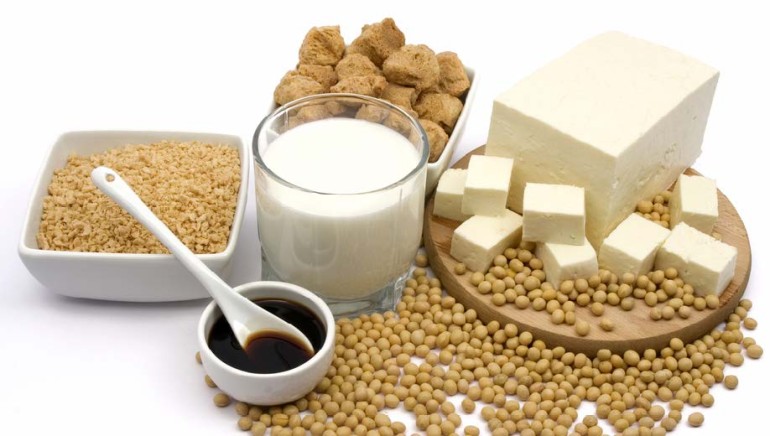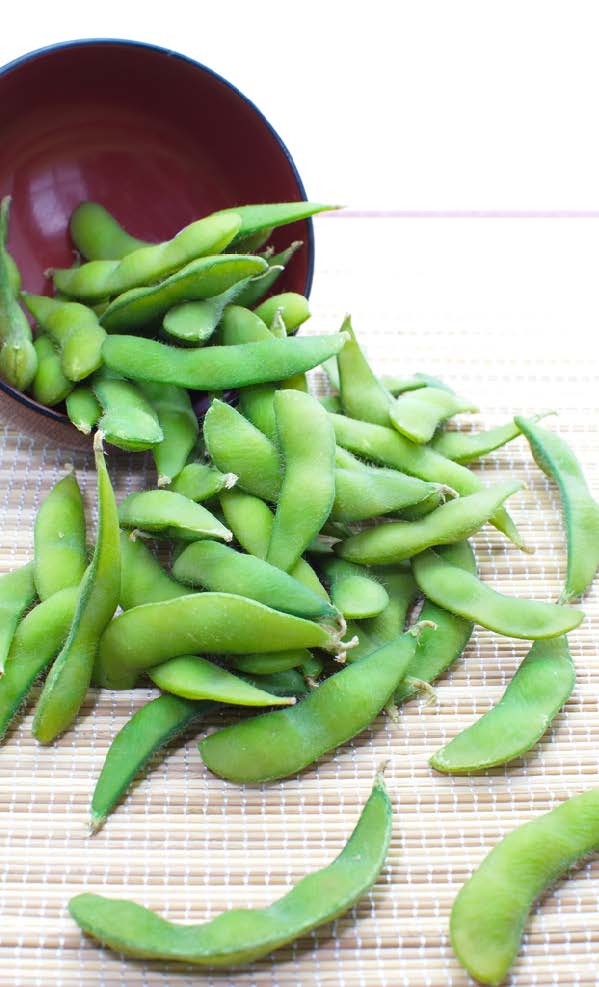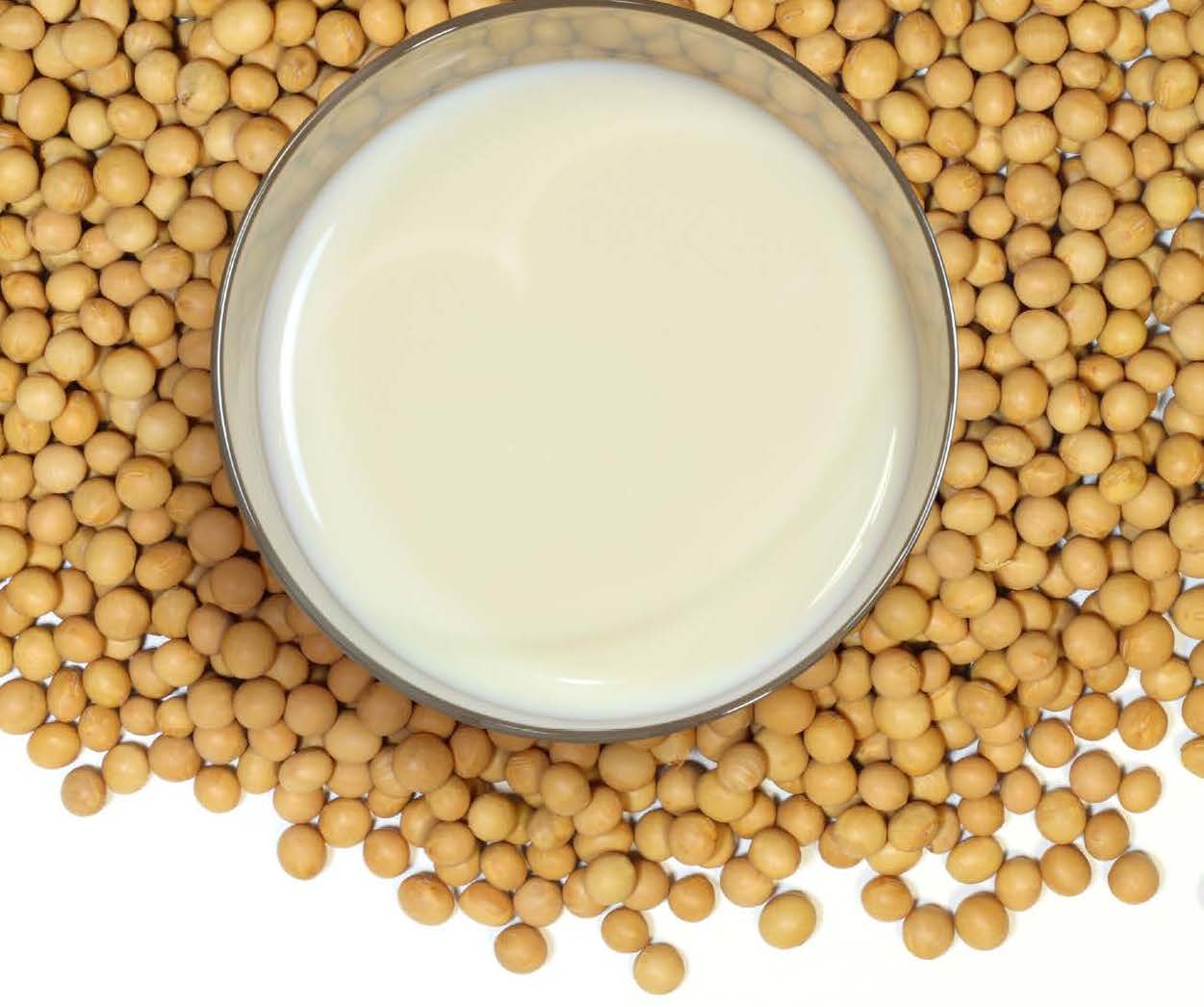
 Not surprisingly, women entering menopause who wanted a natural alternative to conventional hormone therapy began to consider soy. Interest in alternatives increased when the results of the Women’s Health Trial, one of the largest and most expensive clinical trials ever conducted, showed that the harmful effects of hormone therapy appeared to outweigh the benefits. With that, prescriptions for hormone therapy plummeted. However, that plunge in estrogen prescriptions didn’t necessarily translate into increases in soy as questions about soyfoods also began to emerge. Despite the low rates of breast cancer in Japan, concern arose that soyfoods, because they contain isoflavones, might be harmful to breast cancer patients and women at high risk of developing breast cancer. I’ll discuss this further in the next issue of My Menopause Magazine. Also, studies evaluating the benefits of soyfoods appeared to produce conflicting results. Add to that the enormous amount of misinformation on the Internet about soy and it is easy to see why this ancient food has become so controversial. Fortunately, as you read on, you’ll see that the most recent human research greatly supports both the benefits and safety of soyfoods.
Not surprisingly, women entering menopause who wanted a natural alternative to conventional hormone therapy began to consider soy. Interest in alternatives increased when the results of the Women’s Health Trial, one of the largest and most expensive clinical trials ever conducted, showed that the harmful effects of hormone therapy appeared to outweigh the benefits. With that, prescriptions for hormone therapy plummeted. However, that plunge in estrogen prescriptions didn’t necessarily translate into increases in soy as questions about soyfoods also began to emerge. Despite the low rates of breast cancer in Japan, concern arose that soyfoods, because they contain isoflavones, might be harmful to breast cancer patients and women at high risk of developing breast cancer. I’ll discuss this further in the next issue of My Menopause Magazine. Also, studies evaluating the benefits of soyfoods appeared to produce conflicting results. Add to that the enormous amount of misinformation on the Internet about soy and it is easy to see why this ancient food has become so controversial. Fortunately, as you read on, you’ll see that the most recent human research greatly supports both the benefits and safety of soyfoods.
Hot flashes
More than 50 clinical (human intervention) studies have evaluated the effects of isoflavone-containing prod- ucts (e.g., supplements, herbs and soyfoods) on hot flashes. Most reviews of this research have concluded that the evidence is mixed – that is, some studies show benefit whereas others don’t. Since no studies showed isoflavones actually worsened hot flashes, even a conclusion of mixed evidence seems sufficient to justify trying isoflavones for symptom relief.
Supplements higher in genistein are about twice as potent as low-genistein supplements
The analysis, which was published in the journal Menopause, included 13 studies involving 1196 women that evaluated hot flash frequency (number per day) and 9 studies and 988 women that evaluated severity (degree of bothersome). The results indicated that isoflavones consistently improved both frequency and severity. Symptoms were reduced on average by about 50 percent. Roughly half of that effect was due to the placebo. This means that on average, a woman who has eight hot flashes per day will, after taking isoflavones, have only four. That decrease represents a rather significant improvement in quality of life. But the story doesn’t end there. The authors of this analysis also analyzed the results according to the type of supplement used in the studies. Although all the supplements were made from soybeans, they differed quite a bit depending upon from which part of the soybean the isoflavones came from. One type of supplement was low in genistein – the predominate isoflavone in soybeans and soyfoods and the one thought to be most biologically active. The other was very low in genistein because it is made from a small part of the bean that has an isoflavone composition that differs from the bean in general. It turns out the type of supplement used makes a huge difference. In fact, supplements higher in genistein are about twice as potent as low-genistein supplements. So when you choose a supplement, it is important to make sure that it is high in genistein. Soyfoods are high in genistein so they should be very effective although relatively few studies have actually looked at treating hot flashes with soyfoods.
Heart health
In 1999, the us Food and Drug Administration formally acknowledged that soy protein lowers LDL-cholesterol. In addition, a more recently published study showed that soy protein modestly lowers blood pressure2. These two benefits are certainly sufficient to make soyfoods part of a heart-healthy diet, especially when considering that soyfoods provide heart-healthy fat. But as in the case of hot flashes, the isoflavones in soybeans may actually be the key to the cardio-benefits of soyfoods.
In 1999, the US Food and Drug Administration formally acknowledged that soy protein lowers LDL-cholesterol
Isoflavones improve the health of endothelial cells that aren’t functioning properly. There is also some evidence that isoflavones halt the progression of early (subclinical) athero-sclerosis, which is the beginning stage of atherosclerosis. Testing for this early stage is done using ultrasound to measure the thickness of the walls of the carotid arteries, the major arteries in the neck that deliver blood to the brain. Scientists call this test carotid intima media thickness. In one of the largest and longest clinical studies involving soy or isoflavones, researchers from the university of southern California Keck school of medicine enrolled 350 postmenopausal women for three years into one of two groups; one consumed daily 25 grams of milk protein (the equivalent of about 3 cups of milk) and the other group, 25 grams of isoflavone-rich soy protein4. At the end of the three year period, the thickness of the arteries had increased in both groups, which is not unexpected; but it increased 16% less in the soy group. However, the difference between the two groups wasn’t statistically significant – which means from a scientific perspective, that it is not possible to conclude with any certainty that the difference between groups didn’t occur by chance. However, the analysis didn’t end there.
In women between the ages of 50 and 55, soy reduced atherosclerosis progression by an impressive 68%
The researchers also looked at the effects of soy based on the age of the women. In women between the ages of approximately 50 and 55, soy reduced atherosclerosis progression by an impressive 68% whereas in women between the age of 56 and 60, and 61 and older, risk was reduced by only 17 and 9%, respectively. The decrease in the young postmenopausal was statistically significant. What is especially intriguing about this finding is that it is consistent with the “timing” hypothesis. This hypothesis maintains that receiving estrogen soon after, but not late after menopause, causes much stronger heart and cognitive benefits. Since isoflavones do have some estrogen-like effects, it makes sense that soy isoflavones would also have a greater benefit in younger postmenopausal women. of course, it is also these women that are most likely to have hot flashes.
Osteoporosis
Because it is well known that the hormone estrogen reduces bone loss and fracture risk, it makes sense that soy isoflavones could be helpful with bone health as well. We know that women in Asian countries have relatively low rates of hip fracture. Nevertheless, there isn’t a lot of evidence that isoflavones improve bone health. The four longest and largest clinical trials failed to find any benefit of isoflavones on either the hip or spine. This lack of benefit shouldn’t be too surprising because isoflavones are different from the hormone estrogen. Still, certain soyfoods, such as calcium fortified soymilk and calcium-set tofu (tofu made by using a calcium salt to coagulate soymilk) are good choices as calcium sources because the absorption of calcium from these foods is absorbed as well as the calcium is from cow’s milk.
Cognitive function
For two decades, scientists have studied whether the hormone estrogen reduces risk of developing dementia and Alzheimer’s disease. There has also been speculation during this time period that isoflavones might help promote cognitive function. However, there were also population studies that raised some concerns about isoflavones. Two recent developments helped to clarify current understanding of the soy and cognitive function relationship.
Skin health
Both soyfoods and soy isoflavones are being studied as possible cosmetics to promote smoother skin in menopause. It is not surprising this area would be studies because there are estrogen receptors located throughout the skin and estrogen therapy is thought to improve skin health. The published isoflavone research provides a basis for optimism but it is far too limited to reach any conclusions. Research recently presented at several scientific meetings found that isoflavones have the ability to decrease wrinkles in postmenopausal women, but until that is published, the preliminary findings should be viewed with considerable skepticism.
Summary and Intake Recommendations
Soyfoods provide high quality protein and healthy fat. These reasons alone should be enough to make them a regular part of the diet. Soyfoods are also uniquely rich sources of isoflavones. Isoflavones have been shown to alleviate hot flashes and to improve the health of the arteries in post-menopausal women. There isn’t a lot of evidence that they protect bones from osteoporosis or improve cognitive function, although there very early evidence they may reduce wrinkles. How much soy would you have to eat to get the benefits? Try eating between 50 and 75 milligrams of soy isoflavones per day. That is the equivalent of approximately two to three servings of traditional soyfoods per day, such as one cup of soymilk or three to four ounces of tofu.






